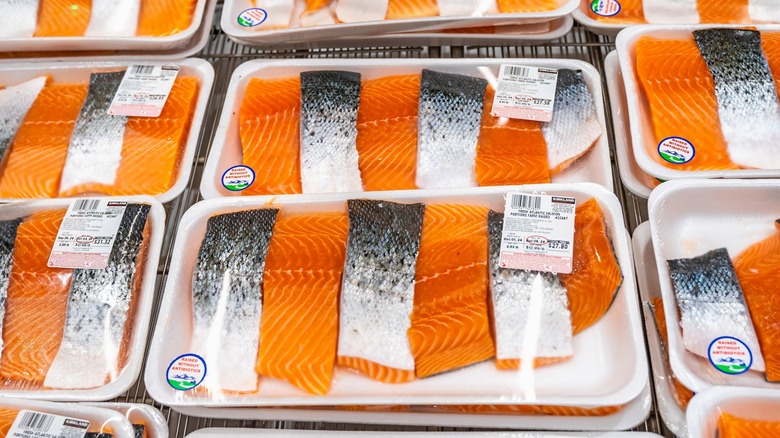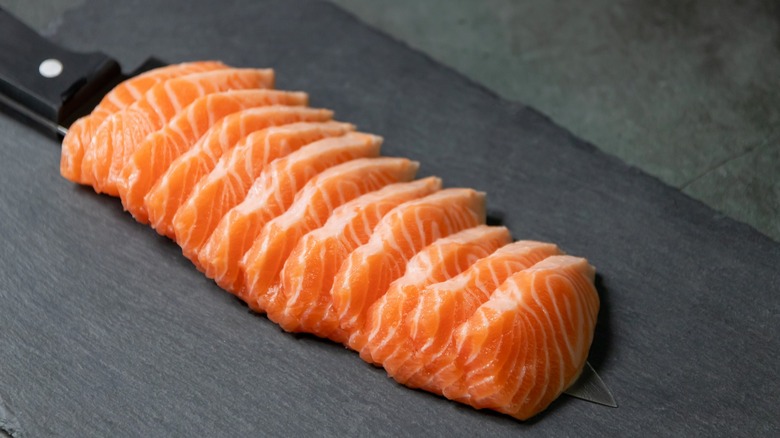Does Costco Salmon Make The Cut As Sushi Grade?
Costco is synonymous with savings for some, but sometimes the prices can seem too good to be true. Take seafood for example. If you wanted to attempt making a poke bowl or sushi at home, getting a screaming deal on salmon might be concerning. Eating raw fish can cause a host of food-borne illnesses, such as salmonella, which makes it even more vital to bring a quality product into your kitchen. However, despite the worry that may come with saving money on buying the Kirkland brand, salmon from Costco can potentially be used to make sushi.
When purchasing salmon from Costco for sushi, it is important to check the label for a few tell-tale signs to determine if it is up to snuff for a dish intended to be eaten raw. Like many other fish species, salmon can harbor parasites in its flesh that can make you ill. Because of that, although wild-caught salmon has a reputation as better than farm-raised, avoid it when making sushi.
Farm-raised salmon are fed food pellets as they grow. Because of this, they have little chance to consume other animals infested with parasites. It isn't a guarantee, but salmon labeled "farmed Alaskan salmon" or "farmed Atlantic salmon" is considered low-risk for parasite infection compared to wild-caught salmon (though there's always a non-zero level of risk when consuming raw fish).
Sushi-grade is not a regulated term for salmon
There are plenty of tips for making great sushi at home, but it all starts with carefully sourcing your ingredients. Some seafood in supermarkets is labeled "sushi-grade" or "sashimi-grade," but these classifications are not standardized or necessarily regulated. The best way to feel good about buying safe salmon from Costco is by carefully checking the label — and possibly asking an employee at the meat counter — to understand how it was handled before it hit the shelves.
The FDA recommends that when salmon is to be consumed raw, the processor should maintain critical control points for safety reasons. One way to accomplish this is to freeze the salmon at -4 degrees Fahrenheit or below for a minimum of seven days. Alternatively, the fish could be frozen at -31 degrees or less until solid for at least 15 hours. These temperatures will eliminate most potential parasites, making the fish most likely to be safe to consume raw.
The flesh of the fish should be firm. If you press a finger into it and it doesn't bounce back immediately, keep searching for a better product — but don't rely on the color to make your decision. A vivid orange looks stunning in a California roll, but you shouldn't judge a salmon's quality by the color, because color can be added after it has been processed. Some of Costco's salmon meets all these marks, so as long as you look carefully at the label, you can reasonably purchase fish for sushi at the big-box store and save a few bucks while you are at it.

